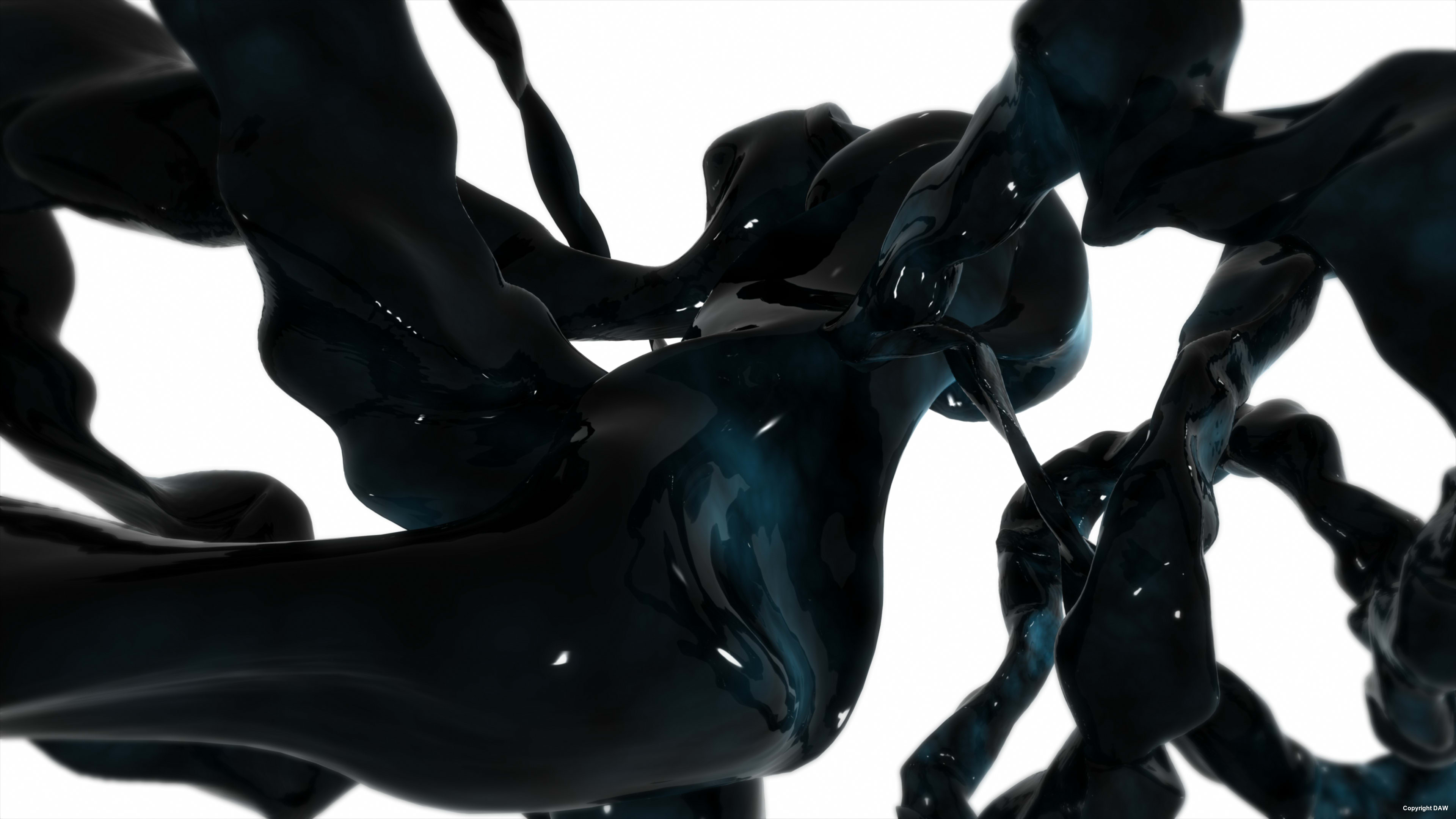Artwork Details
"Fluid Forms - Node," is part of a cycle of abstract works inspired by the theme of water, fluidity.
Interweaving of dark fluid matter, float in an aseptic white void, creating from time to time envelopments unpredictable and plays between solids and voids that are inspired by the aesthetic concept of Yohaku no-bi belonging to Japanese culture, aimed at exalting the "beauty of empty space" or "beauty of the unfinished."
In all this there is the intent to bring the viewer back to water, as the primordial element of origin of life in constant change.
The work is made in CGI (computer-generated imagery) and is part of the artist's research in digital art, which he has been conducting for many years along with other more traditional disciplines such as painting or drawing. Generally it is the collection of different software that are used to create special effects (VFX) in movies, television, commercials and in video games. In this specific case, such techniques were applied for the purpose of pure artistic research. With the purpose of creating the illusion of reality, to make verisimilar landscapes or imaginary environments, to involve the viewer in a dreamlike vision.
Artist Details
View All From Artist
Guido Albanese is an Italian contemporary artist born in 1968 in Barletta, Puglia, where he still lives and works.
He is a multifaceted artist who uses multiple art forms, his work in fact includes painting, painting digital, digital photography, 3D computer graphics; and consists mainly of works oscillating between figurative and abstract, combining tradition and innovation. The common thread that unites them is based on the exploration of the concept of nature, particularly on landscape, to which he has devoted many years of study in the observation of certain archetypal elements that compose it, such as water and clouds.
He has been always fascinated by their mutability and their ability to create, with the complicity of light, evocative, mysterious and harmonious atmospheres. His investigation is greatly inspired by the ancient thought of tradition, both Western and Eastern. Much of his research originates, though not explicitly, from the aesthetic concept of Yohaku no-bi that belongs to Japanese culture. The locution "yohaku no-bi" can be translated as "beauty of empty space" or "beauty of the unfinished." This concept is based on the philosophy of wabi-sabi, which celebrates imperfection, the simplicity and naturalness. Yohaku no-bi refers to the idea that leaving empty or unfinished spaces in a work of art can create a sense of beauty, balance, and give the viewer a chance to stimulate his or her imagination and active participation. His intent is to create an experience of introspection, to inspire deep, primal emotions in connection with nature and being.
After studying scenography at the Academy of Fine Arts in Florence and Bari, he completed his training in 1994 at the Teatro Alla Scala in Milan. He later collaborated as an assistant with set designers Ezio Frigerio in Paris and William Orlandi in Milan. In 1998 attracted by the potential of computer graphics, he devoted himself to digital art and experimentation with new artistic techniques. His works are inspired in particular from painters of the past such as Giorgione, Leonardo da Vinci, Hasegawa Tōhaku, Ike no Taiga, Turner, De Nittis, Monet; but also contemporary artists such as Morandi, Giacometti, Rothko, Schifano,
Richter, Schnabel.
In 2003 he received the "Chamber of Commerce" Special Prize, "Pavia Young European Art," with the patronage of the Lombardy Region and with the jury chaired by Rossana Bossaglia. In 2006, for the "City of Novara" National Painting and Sculpture Prize, with the jury chaired by Michelangelo Pistoletto, he received the Special Prize, for the use of new technologies. In "2010 he was among the finalists in the section Photography of the 4th Venice Lagoon International Art Prize.
Collection Details
View all from collection
Guido Albanese private Collection
